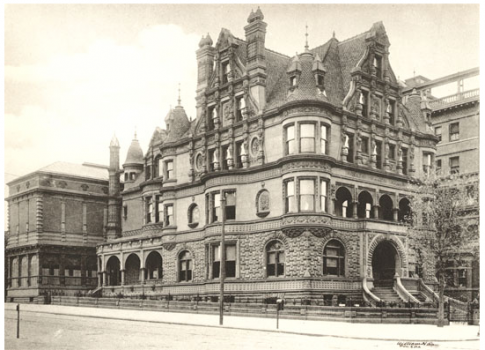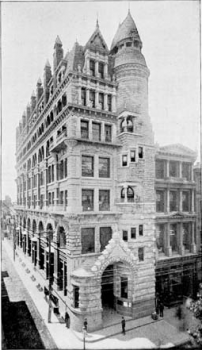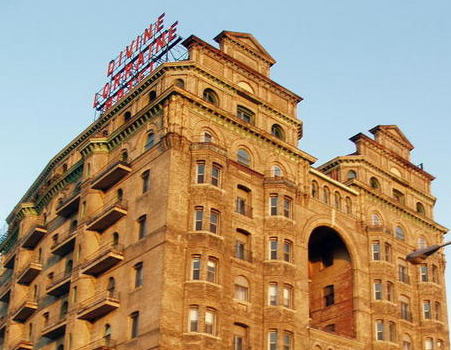Willis Gaylord Hale was a late 19th to early 20th century architect who was known for having developed a unique, ornate style that he employed while designing structures in the Philadelphia area. Born in Seneca Falls, New York in 1848, Hale first entered Philadelphia in the late 1860’s when he ventured there to work in the offices of other notable architects, Samuel Sloan and John MacArthur Jr. Hale left Philadelphia in 1873 to pursue other work endeavors, but apparently had not had enough of the good old city and returned three short years later to open his own architectural firm – an endeavor that he would carry on for the rest of his days.
Hale was originally hailed (get it!?) for his architectural genius by fellow architects of the late century. They described him as a true visionary; one whose work was “a model of architectural beauty” (Bryn Mawr). And yet, after his death Hale was instead harshly criticized by both the public and the press. Journalist and critic Montgomery Schuyler shared the public sentiment when he implemented two of Hale’s works, the Record Building and the Hale Building, as centerfolds for his piece entitled Architectural Aberrations. Schuyler showed zero restraint when describing Hale’s art, employing such words as “revolting” and “irrational” to describe the distaste he associated with his crammed architectural approach which seems to correlate with the ‘go big or go home’ motif.
Despite the most recent criticism Willis G. Hale has received, which seems to be overwhelmingly negative, it appears as though some are still in favor of his architecture as his work can still be seen to this day. Even among the fluctuating styles of past and present that compose present day Philadelphia, Hale’s work still remains poignant amongst this disparity. And while his work may still be criticized, no one can deny his originality, which to me is quite refreshing when viewed in moderation. The photographs below are just a small selection of the 115 buildings he constructed within the Philadelphia area. —-Alex Graziano



